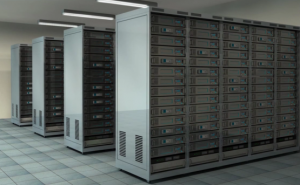It’s been over eight years since Oxford Nanopore presented the first ever nanopore sequencing data at the AGBT conference in February 2012, where they provided an overview of the hardware and software behind the GridION and MinION systems.
Even today Oxford Nanopore could be seen as a dark horse. Their GridION platform is used to run all their nanopore technology, including DNA sequencing and protein analysis. This machine, though seemingly small, is extremely powerful when used in combination with other Nanopore machines.
Today we’re revisiting these machines to look at what it is that makes them so efficient, and effective, for cluster sequencing.

Sequencing in Clusters
At first glance, these machines are small and low-cost. Like the Ion Torrent, MiSeq and GS Junior, the Nanopore machines are suitable to sit on the bench of a small lab, and are ideal for running small projects that have tight budgets and limited floorspace.
While they look slightly dated, these machines are actually designed to fit together in standard computing cluster racks, and Oxford Nanopore refer to each of the individual machines as “nodes”.
The nodes connect together via a standard network, and can talk to each other, as well as report data in real time through their network to other computers.
When joined together like this, one machine can be designated as the control node, and during sequencing many nodes can be assigned to sequence the same sample, which maximizes efficiency.

Interacting with Sequence in Real-Time
Another strength highlighted by Nanopore is the ability of the machines to react in real time, changing aspects of their behaviour depending on the orders given during sequencing.
Some of these adaptations will be automatic quality-control changes, for example, the salt concentration and the temperature can change to optimize efficiency and quality.
The machines can also be given basic preset targets which means that you can run the machine until you have what you want, rather than running it for a set period of time.
These machines can handle up to 96 different samples simultaneously, so you can decide to sequence one sample until you have enough DNA from it, then move onto another one, and so on.
The machines can communicate with each other, so four machines could sequence the same sample, and stop once they had produced enough sequence between them.
Looking to the Future
It goes without saying that the cost and accuracy will play a significant role in assessing how strong a prospective machine would be.
However, providing the throughput is high enough, the fact that the technology is single molecule should keep the enzyme cost down.
Ultimately, these machines continue to lead the way in cluster sequencing, providing maximum efficiency.
For more information on the system, see the website. They have also produced a helpful video that explains the system:
